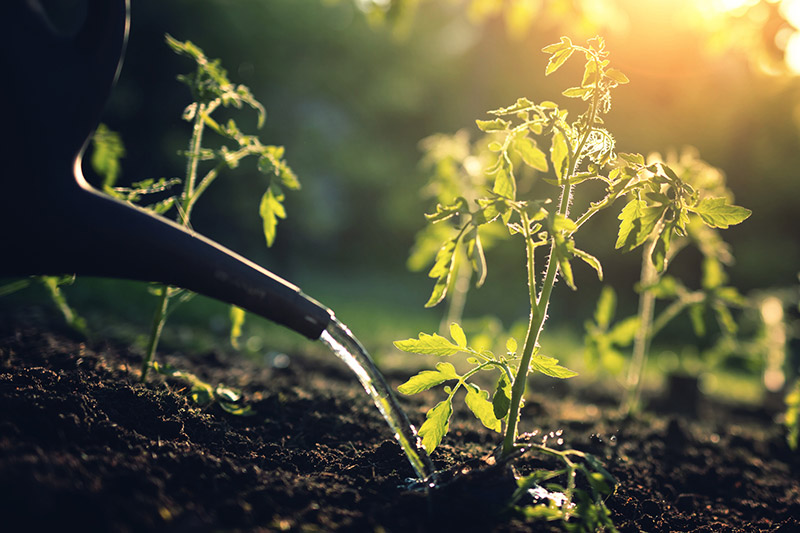Gardening is a fulfilling and enjoyable activity, but it comes with its own set of challenges, one of the most significant being the prevention and management of plant diseases. Effective disease prevention in the garden requires a combination of good practices, careful observation, and timely interventions. Here are some essential tips and solutions for keeping your garden healthy and disease-free.
1. Choose Disease-Resistant Varieties
Selecting plant varieties that are resistant to common diseases in your area is one of the most effective ways to prevent disease in your garden. Many seed companies offer disease-resistant strains of vegetables, fruits, and flowers. Research and choose the right varieties for your region and soil type.
2. Maintain Healthy Soil
Healthy soil is the foundation of a disease-free garden. Ensure your soil is rich in organic matter by adding compost and other organic amendments. Healthy soil supports strong plant growth and improves the plants' resistance to diseases.
3. Practice Crop Rotation
Crop rotation involves changing the type of crops grown in a particular area of the garden each season. This practice helps prevent the buildup of pathogens in the soil that target specific plants. Avoid planting the same type of crops in the same spot for consecutive seasons.

4. Proper Watering Techniques
Overwatering and underwatering can both lead to plant stress and make them more susceptible to diseases. Water your plants at the base to keep the foliage dry, as wet leaves can encourage the growth of fungal diseases. Early morning watering is ideal as it allows the plants to dry off before evening.
5. Space Plants Appropriately
Proper spacing between plants ensures good air circulation, which helps keep the foliage dry and reduces the likelihood of disease. Overcrowded plants are more prone to fungal and bacterial infections.
6. Mulch Your Garden
Mulching helps retain soil moisture, suppresses weeds, and improves soil structure. Organic mulches, such as straw, wood chips, or shredded leaves, also add nutrients to the soil as they decompose. Mulch creates a barrier that prevents soil-borne diseases from splashing onto the plants during rainfall or watering.
7. Monitor for Pests
Pests can carry and spread diseases. Regularly inspect your plants for signs of pest infestation and take appropriate action if pests are found. Introducing beneficial insects, such as ladybugs and predatory beetles, can help control pest populations naturally.
8. Prune and Remove Infected Plants
Remove and destroy any diseased plant material promptly to prevent the spread of pathogens. Regular pruning improves air circulation and light penetration, reducing the conditions that favor disease development. Always use clean, sterilized tools to avoid spreading diseases.
9. Use Organic Fungicides and Pesticides
If you need to use chemical treatments, opt for organic fungicides and pesticides that are less harmful to beneficial insects and the environment. Neem oil, sulfur, and copper-based fungicides are effective against many common garden diseases.
10. Practice Good Garden Hygiene
Keep your garden clean by removing fallen leaves, debris, and weeds regularly. Clean up the garden at the end of the growing season to reduce the likelihood of diseases overwintering in the soil or on plant debris.
Common Garden Diseases and Solutions
- Powdery Mildew
- Symptoms: White, powdery spots on leaves and stems.
- Prevention: Ensure good air circulation and avoid overhead watering.
- Treatment: Apply neem oil or sulfur-based fungicides.
- Blight
- Symptoms: Dark, water-soaked spots on leaves, stems, and fruits.
- Prevention: Use disease-resistant varieties and practice crop rotation.
- Treatment: Remove and destroy infected plants, and apply copper-based fungicides.
- Root Rot
- Symptoms: Wilting plants, yellowing leaves, and stunted growth.
- Prevention: Ensure well-draining soil and avoid overwatering.
- Treatment: Improve soil drainage and remove affected plants.
- Leaf Spot
- Symptoms: Small, dark spots on leaves, which may enlarge and cause leaf drop.
- Prevention: Avoid overhead watering and space plants appropriately.
- Treatment: Remove infected leaves and apply fungicides if necessary.
By implementing these disease prevention strategies and solutions, you can maintain a healthy and thriving garden. Regular monitoring, good cultural practices, and timely interventions are key to preventing and managing plant diseases effectively. Happy gardening!
'Garden' 카테고리의 다른 글
| Hydroponics Gardening A Modern Solution to Traditional Agriculture (0) | 2024.07.12 |
|---|---|
| The Economic Aspects of Gardening (0) | 2024.07.12 |
| Proper Methods of Irrigation Enhancing Agricultural Efficiency and Sustainability (0) | 2024.07.12 |
| Best Manure and Compost for Gardening (0) | 2024.07.11 |
| Benefits of organic gardening (0) | 2024.07.11 |



